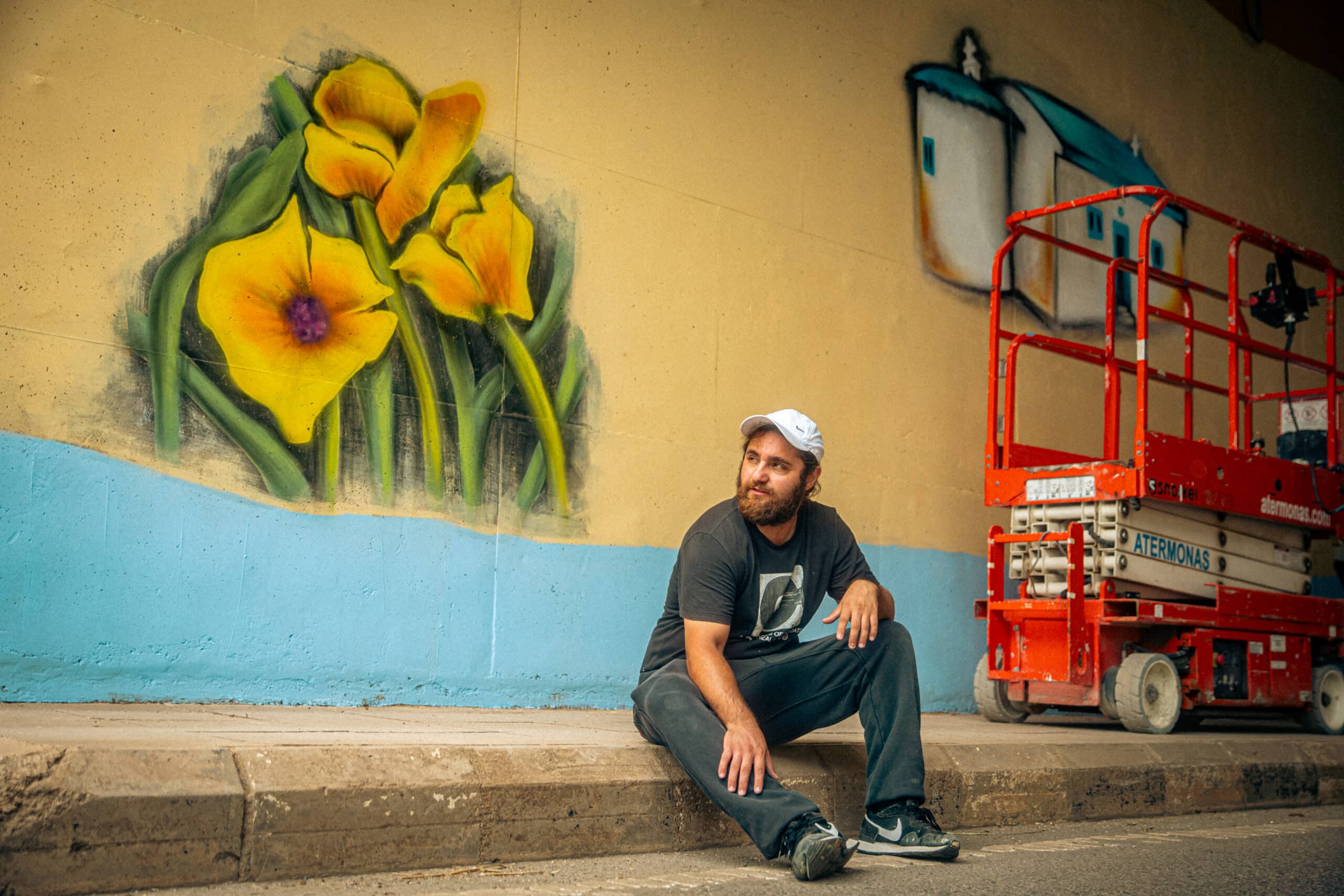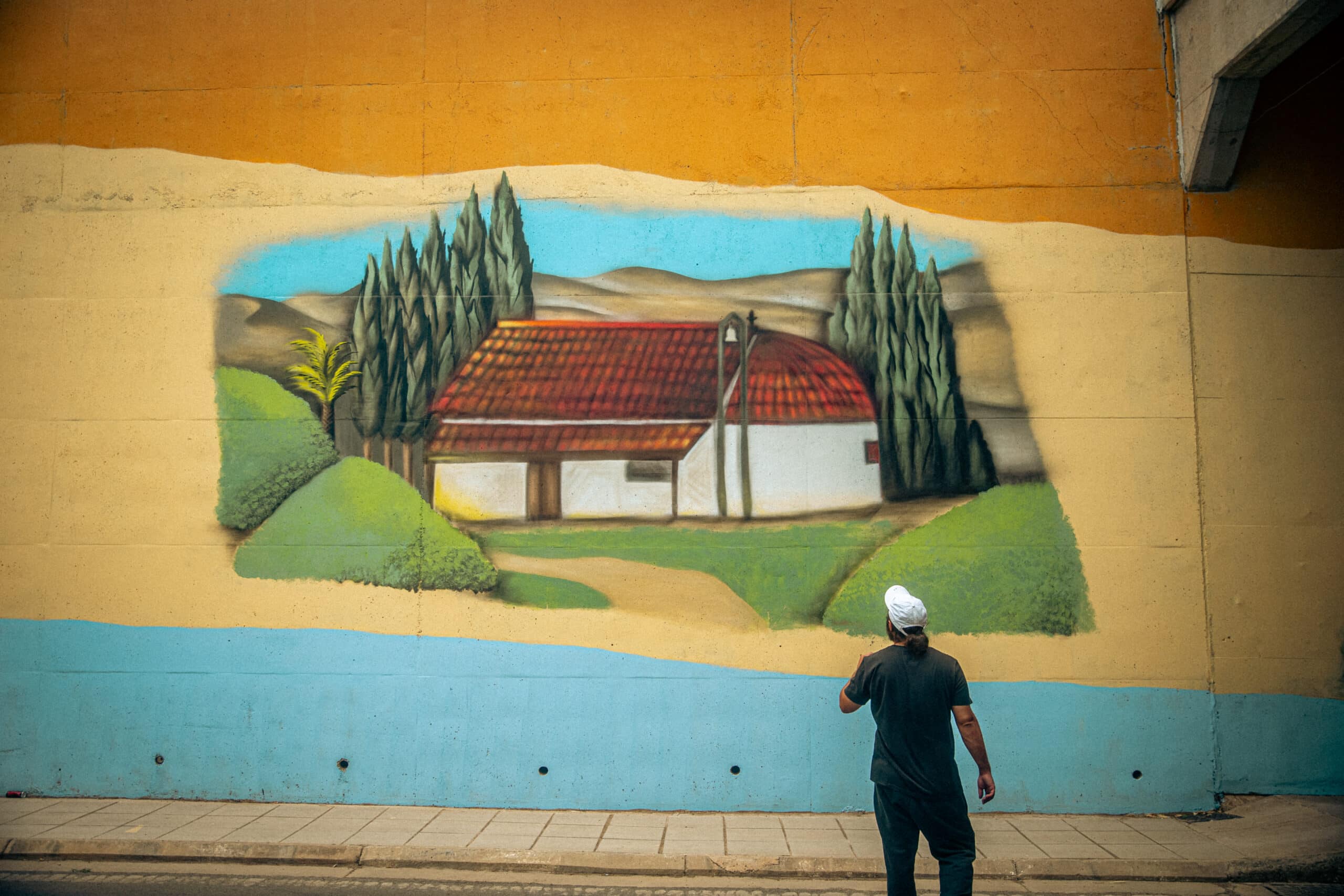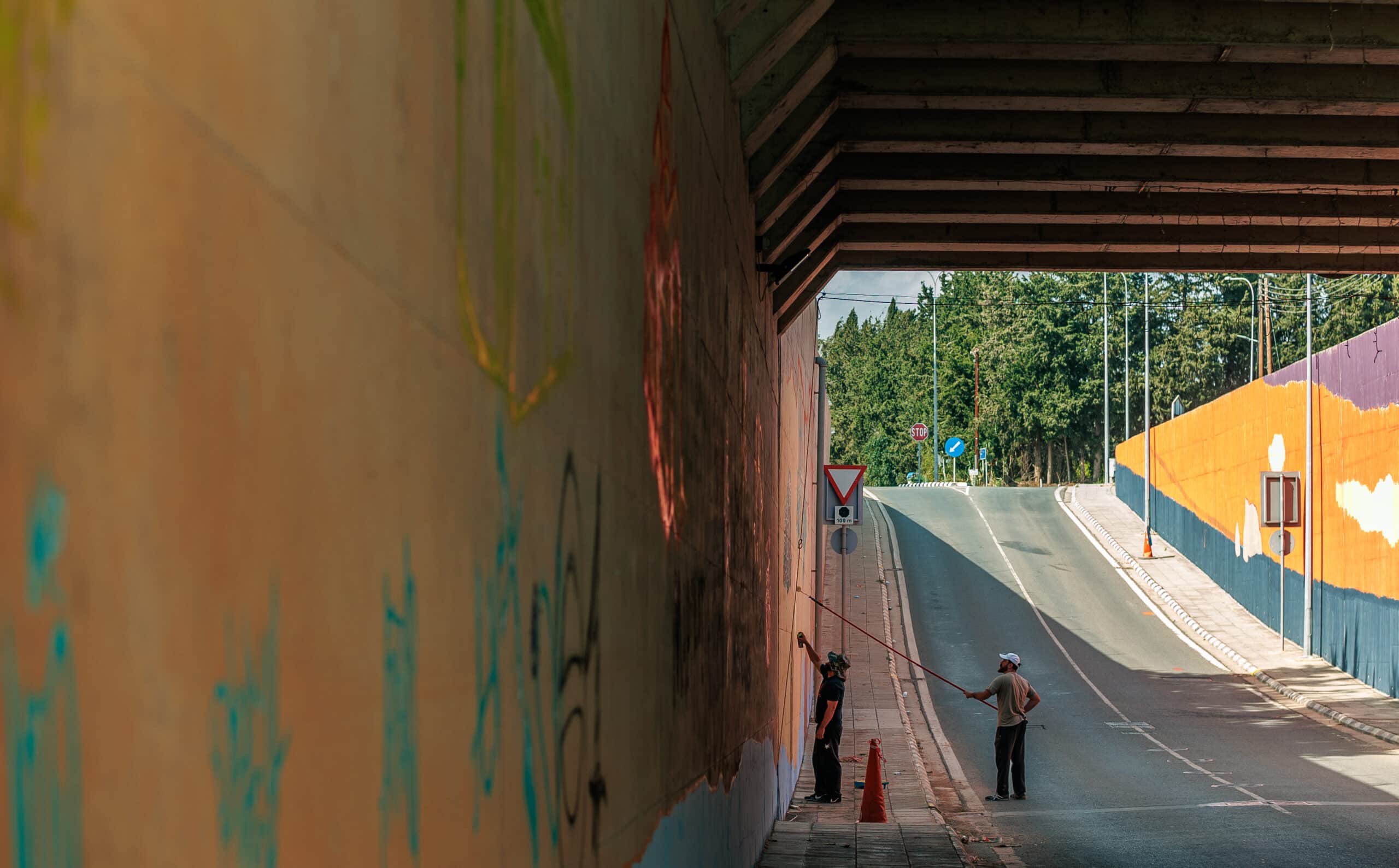Entrance to the Paphos village of Mandria has been given a colourful facelift
By Melissa Hekkers
The island’s longest mural now stands complete at the entrance of Mandria village on the outskirts of Paphos, a piece of art which spans 540 metres and is inspired by the surroundings of the village itself, its people and history.
Just been finished a few weeks ago, the mural is known as “MandriArt”.
As an artist specialising in murals, Rafael Stavrinou is no stranger to vertical surfaces of Paphos and its wider area. Some of you will already recognise his street art on the exterior of Chernobyl Bar which he did in collaboration with artist Iraklis Varnavides in the heart of Paphos in 2021. It depicts a girl coming out of a sunset with a Ferris wheel in the background.
“Although she’s wearing a mask to protect herself from harm she holds a sunflower which represents hope,” says Stavrinou.

Another of his outstanding pieces entitled “Toxicity of the Ocean” depicts a lionfish wearing an oxygen mask and a lobster struggling with a plastic bag and is found in the heart of Polis Chrysochous.
“Both of the animals convey some of the problems of the ocean. There’s also an octopus, which is the ironic part of the mural. Octopuses are considered the ‘smart guys’ but this one is holding a selfie stick, taking photos of the situation [the masked lionfish and struggling lobster].”
Yet the MandriArt mural is his biggest accomplishment so far.
“I have worked on several projects in the past but of course not of this size. It’s like working on five or six projects at the same time,” says Stavrinou, as he explains that he has been working on walls ever since he finished his studies and began working professionally on the island back in 2017.
As a Fine Arts graduate from Birmingham City University, he reveals that MandiArt – as he named the original mural in Mandria – was a mutual decision between him and the community council of Mandria.
“I saw the walls when I was passing by one day and I was very interested in creating something innovative on them,” he says.
And so it happened.
It was in May and under difficult conditions and high temperatures that Stavrinou and his assistant and fellow artist, Markos Papaonisiforou, began working on the mural.
“One of the biggest challenges was the weather as we needed the sunlight to see the actual colours,” says Stavrinou.

Predominantly using spray paint as his main go-to material and acrylic paint for the backdrops, the two walls stretch along a tunnel accessing the village. The focus is nostalgia for Mandria and its surroundings. The entire mural is based on a map of the area, while most elements are inspired by photographs Stavrinou and his team took themselves.
“On the one side of the wall, there are some elements that include moments from the everyday life of the people in the village, we also represented churches such as Ayia Vryani but also the crops that are cultivated there such as watermelon and potatoes. We also included the agricultural machinery used for agriculture, as well as flowers from the area.”
On the other side of the wall, Stavrinou turns more to uncultivated nature, with the nearby Xeros river and the Troodos mountains used as a background. Here, Stavrinou created a collage of several endangered and local birds including eagles, bee-eaters, hawks and the black francolin.
“We wanted to create a scene which depicts them living peacefully by the river,” says Stavrinou. There is also a mythological element. The cape at Mandria was named after Zephyr, the god and personification of the west wind. In mythology, the goddess Aphrodite was brought to Paphos by Zephyr over the waves of the sea in soft foam, hence why Stavrinou chose to include Aphrodite in the mural.

Although Stavrinou has been active over the years, he also addresses the challenges faced by Paphos-based artists where opportunities are reportedly scarce.
“Sometimes it’s very hard to be honest. We live in a city which doesn’t help artists so much. In 2017, Paphos was the European Capital of Culture, but since then, nothing has really happened,” he complains.
“We have so much history here but I feel that we don’t want to evolve on this. I have tried, on many occasions to create more murals in the city but some people see it differently… but I love my city and this is one of the reasons that I’m still here and trying to express myself,” Stavrinou says.
“I believe that to change things you need to try and give opportunities. Perhaps a good start would be to create a festival which runs annually; that would give more options for artists to express themselves.”
But, in the meantime, Stavrinou reflects on his most current work of art.
“I feel like one of my biggest dreams has come true. It’s a beautiful feeling that I can’t explain easily. Suddenly, one day, the opportunity comes, so many hours, so many days working on it. It’s just amazing…”

